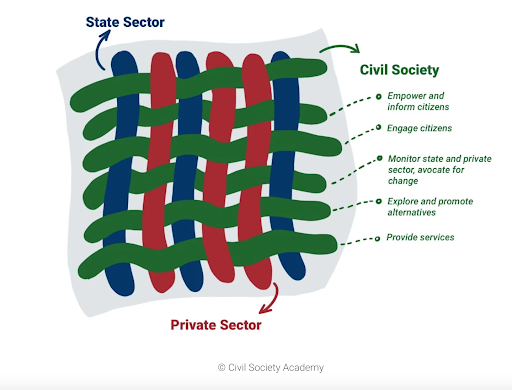The families with the strongest legacies are not necessarily the ones that build the most wealth.
Instead, the families with enduring legacies are those that have a strong sense of identity and that are unified over a shared set of values. It is easy for family wealth to be destroyed in a generation through disputes, recklessness and greed. Reduce the risk of these threats, and family cohesion is much more likely to persist into the future.
One simple way of building family cohesion is embedding charitable giving into your family ethos. Get your kids involved today and see improvements in their sense of responsibility, integrity and family pride.
Family giving builds family cohesion
Families that embed giving in their ethos can see improvements in their family cohesion and unity. There are a number of reasons for this:
- Values alignment: In order to come to a shared decision on where donations are to be made, a family is forced to consider what is important to them and what they want their legacy to be. Openly discussing what is important to each family member makes it possible to get a strong understanding of the values that unite the family.
- Dispute resolution: A process of negotiation between family members is necessary to decide where the money should go. Charitable decision making can be a low-stakes way of practicing shared decision making. This can be useful where there is disagreement or conflict between family members.
- Goodwill: There can be a greater sense of goodwill between family members knowing that others aren’t operating out of only selfish motivations. Families see the best of each other when they are living out good values.
Why give to charity?
The act of giving to charity is important across all cultures and religions. Charities improve the overall welfare of those less fortunate, they give a voice to those that cannot speak for themselves and they can also help to change policies that are not in society’s best interests.
Some argue that in countries and cultures like Australia, with strong social services and relatively high taxes, there is less of an impetus for charity. However, a functioning democratic society requires the presence of an active civic society to work. It is through charities and not-for-profits, like local community groups, sporting clubs and charities, that citizens are informed and engaged about issues, state and private sectors are monitored, alternatives are explored and services are provided. The existence of civic society requires active engagement and support by citizens – no matter the tax rate.

Finally, the act of giving is an essential way of living true to your values.
Giving to charity is an important antidote to greed. It provides you with a connection with a greater purpose. It allows you to experience gratitude. By personally connecting with those experiencing hardship, it gives a greater sense of your own fortune.
Getting the kids involved in family giving
When the purpose of family giving is to instill a set of strong values within a family unit, there are a number of key decisions that a family needs to consider:
- Where will the funds come from? Will donated funds come from your business income, family trust, or will you set up an independent trust? There are pros and cons to each approach. Setting up a Private Ancillary Trust, or PAF, provides the strongest possible tool for ensuring a legacy of giving within a family. PAFs can exist into perpetuity and the family is obliged by law to make an annual donation. Hundreds of families across Australia each year take their commitment to family giving so seriously that they decide to formalise their giving by establishing a PAF. Most wealth managers, including Stephan Advisory, are experienced in setting up PAFs.
However, PAFs can be administratively burdensome. It’s possible to give regularly without one. In this case, the family will depend on voluntary commitments from family leaders to champion that giving is practiced on a regular basis. Keep in mind that enthusiasm may wane due to circumstances. Without a regulatory requirement to make a gift to charity, gift-making can be easily sidelined for other priorities.
- Who will be involved in decision making? The purpose of family giving is to create unity and shared values within the family. Consider the various levels of decision makers in your family and pathways for shared ownership over the charitable gifts.
There will usually be a matriarch/patriarch (or primary wealth builder) that initiates the idea of family giving. It will be their responsibility to use charitable giving as a tool for involving the family in shared decision-making. They will need to start by identifying who they want involved in the family (including or excluding spouses). They will then need to explore different decision-making frameworks to establish how their family can achieve a shared vision from their giving. In some families, decision by consensus is effective. In others, a hierarchical approach with extensive consultation is more appropriate.
- Practicing dispute resolution. To engage younger generations, it’s important that they feel empowered in carrying on the family’s legacy. However, this may lead to conflict. Charitable giving conflicts offer an outlet for the family to practice dispute resolution in a low-stakes environment.
Where it is difficult for a family to agree on where the funds should go, explore other distribution options that still bring about a sense of shared legacy. For instance, each individual may receive a share of the total family gift amount to distribute to a charity of their own choice. Or, family members with shared interests may group together to pursue their preferred cause; with the family as a whole distributing a portfolio of charity gifts. Philanthropic and charity advisors (e.g. Seedling) are well placed to help you understand the various gifting options.
Conclusion
One simple way of building family cohesion is embedding charitable giving into your family ethos. It helps to reduce the risk of family disputes, recklessness and greed. It creates family cohesion and a strong legacy. Most importantly, by embedding giving in your family, you will build a better society for your ancestors to inherit. Giving is a lifelong journey, so get your kids involved today.
—
Written by: Jessica Bowman and Kylie Wallace (Seedling Co-Founders)
For more information, head to the Seedling website.








